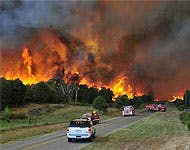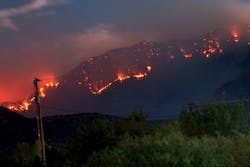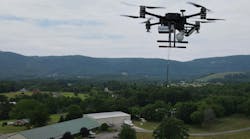NORMAN, Okla., 26 March 2013. Representatives of the Oklahoma State Fire Marshall’s office provided several examples of situations in which unmanned aircraft systems (UAS) have saved people, property, and money, describes Chief John Hansen during the Unmanned Aircraft Systems (UAS) Summit hosted by the Unmanned Systems Alliance of Oklahoma (USA-OK).
First response professionals in Oklahoma rely on robotic aircraft for public safety (RAPS) to assist with a variety of events, including wildfires, floods, train derailment, oil and gas mishaps, and various natural disasters. Yet, Hansen admits, public perception of UAS is not favorable; in fact, many now avoid use of the word “drone” given that it carries a negative connotation. “From our perspective, [UAS] are lifesavers. They help see through the smoke,” says Chief John Hansen of the Oklahoma State Fire Marshall’s office. “This technology is going to help…folks get home to their families.”
Droughts bring infernos, and “we need an aerial solution we can deploy quickly,” Hansen continues. Wildfires are a growing problem nationwide, he recognizes. “Oklahoma has declared war on wildfires,” he says, and unmanned aircraft systems (UAS) are part of the solution.
“They save the lives of firefighters, and help us get to citizens quicker,” Hansen affirms. “RAPS can allow us to direct responders to the exact spots where we need them to be and be sure that they can get out.”
Hansen presented a photo of a woman up to her neck in rushing flood water being rescued from a flood, noting that “she doesn’t [care] about the privacy issues related to unmanned aircraft systems right now; she wants out.”
Hansen ended his talk with a call to action for the UAS community: “Perfect this technology and get it in the hands of first responders. Take practical information and turn it into a tactical [solution]–because sometimes bad things happen to good people.
“RAPS will save people, property, and money,” Hansen adds. “Our goal is everyone goes home at the end of the day.”





